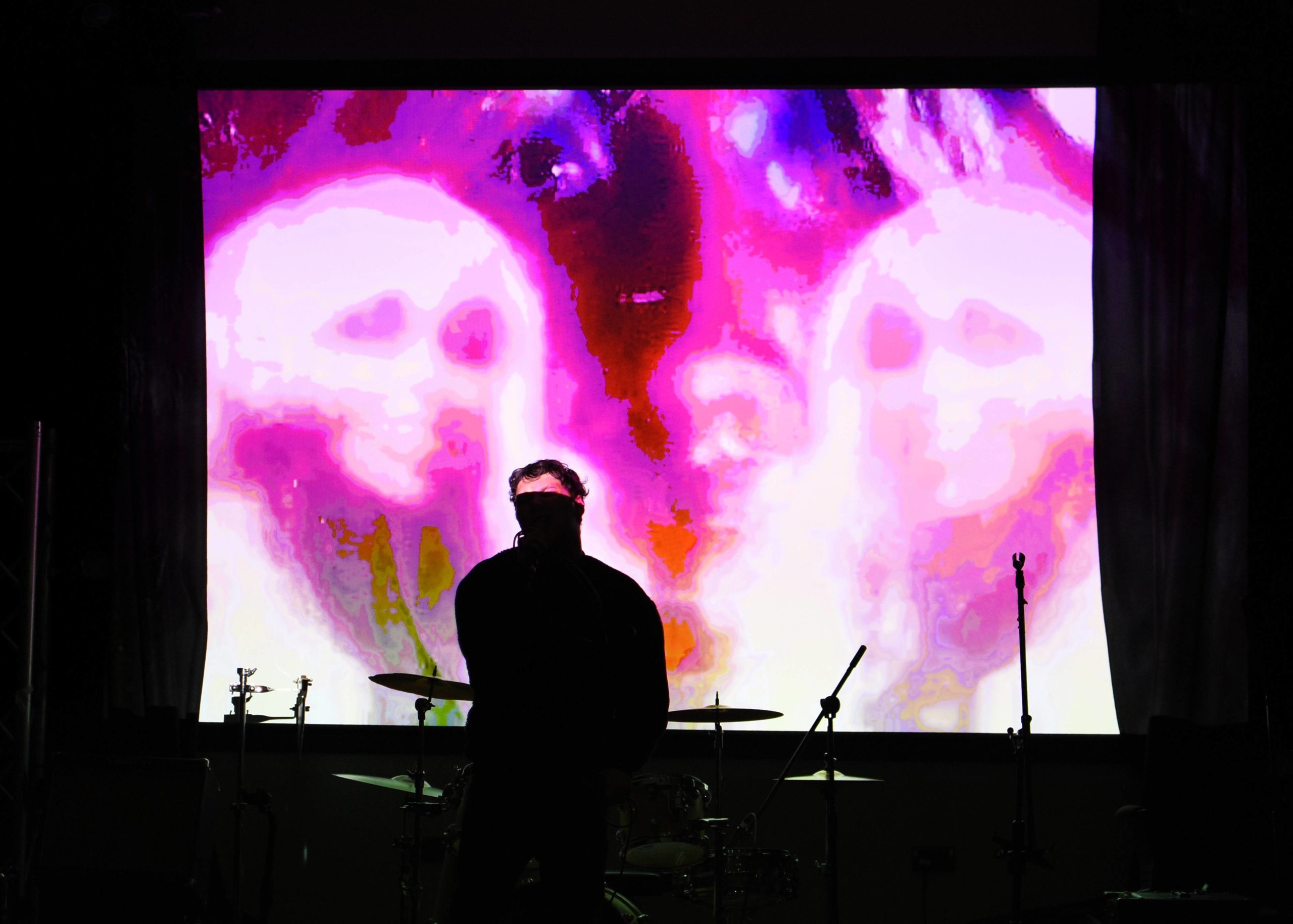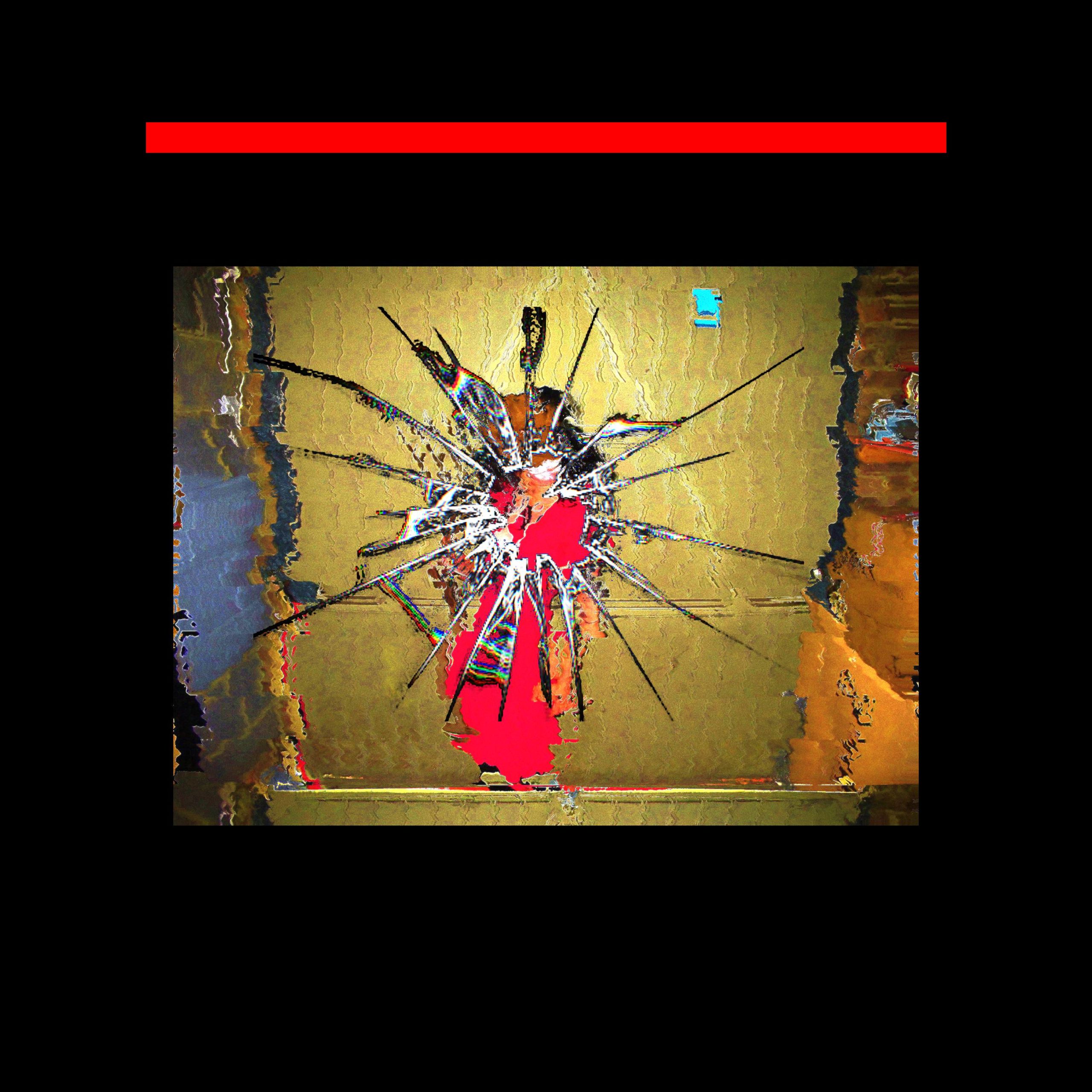Dance/Electronic
Angusraze Details the Creation of Each Track off His Unique Album ‘Foxmask’

The highly ambitious Angusraze has recently been enjoying the success of his brand new album, Foxmask, released in May via Painted Halo Records. The hype train behind the record began in March when we helped premiere the first single, “Green Hay.” The album is unconventional in all of the right ways which is exactly what Angusraze strives to be as an artist. His sound is highly original, one that won’t really remind you of any other artist past or present. His live show is even more ingenious, a highly multimedia production that has a confrontational element to it.
In offering a concise summary of his music, the artist stated, “With my work as a whole I often attempt to create a direct path that weaves between a hyper-personal effort and an attempt to dive into a fantasy-based narrative as a form of catharsis and a reactionary attempt to protect my own emotions.”
To learn some more about the creative process behind Foxmask, we caught up with Angusraze for an exclusive track-by-track rundown of each song on the album where he delves deeper into his inspirations and his thought process.
1. “Intro”
“When I create a project, the intro piece to the album or EP serves to act as an auditory arc to the intention of the project. Sonically, I was inspired by the main crutch of the album which was mostly ‘70s and ‘80s lo-fi horror and sci-fi soundtracks, and general sound design. The piece of music at the start is from an audio introduction which was used in grindhouse cinema in the ‘70s and ‘80s. It’s also me experimenting with ~BASS~ which I felt I wanted to include because it was lacking from the first album Rozey Cheekx.”
2. “Green Hay”
“In my work, I often attempt to strike a specific balance between very experimental abstraction and a familiarity that allows a sense of emotional connection. ‘Green Hay’ as a song came to fruition with this concept in mind. With this song, I was heavily inspired by French house and the work of producers such as Sebastian and the inclusion of harmonic resonance as a melodic quality. Lyrically, the song is a leftover from the earlier scrapped version of Foxmask, which was a more politically-inclined and collaborative record. The lyrics relate to the dehumanization present in war and the objectification of those lost, especially retrospectively. The central lyric of the album is present in this song, ‘On and on the cycle goes’ is referential to violence being repeated cyclically in history and connects to the narrative of the album as a whole, which will be explored in the rest of the songs on the album.”

Artwork for ‘Foxmask’ by Angusraze
3. “You Destroyed It All”
“Before I dissect some of the musical components of the song, I thought it would be relevant to bring up the music video for the song ‘Green Hay,’ as the video introduces important narrative elements for this song and the rest of the album. Incidentally, I am working on a companion movie that expands this narrative in film form.
In the music video we are introduced to the recurring character of Soozie, who appears in different forms across my visual works, album covers, music videos; she acts as an avatar for myself and as a physical and visual vehicle for my emotions at the time of making whatever project she manifests in, she changes her look and personality in accordance with this. In the video, we are also introduced to the Mill, a structure that acts, in the universe of this album, as a gateway to the other dimensions in which the other versions of Soozie live. Foxmask Soozie holds the positions of the observer of the Mill, and with that comes the responsibilities of monitoring these worlds through the countless doors, windows and portals which exist within the Mill. In the video, we see her sense a negative energy represented by a red material that begins to infect the Mill from the basement up. Soozie manages to escape, but the Mill is utterly destroyed, leaving the other dimensions without an Observer.
‘You Destroyed It All’ is the internal narrative of Soozie in the midst of the Mill being torn apart, with voices ranging from feminine wails to gritted masculine snarls attempting to emulate a sort of ‘angel-devil’ contrast between Soozie’s rational thoughts and self doubt. Musically, I wanted to adopt a more minimalist base beat the track and have it more ‘snappy’ than my usual affairs, with a nod to UK rave music, specifically jungle music.”
4. “What Are We?”
“This song is written from the perspective of a military crew that has been sent to clean up the ruins of the Mill. Two soldiers are assigned to monitor the Mill from a cube-shaped ship that hovers above the rubble. The leftover strands of the negative energy that initially destroyed the Mill start to creep into the ship, resulting in a Kubrick-esque descent into madness. The lyrical content of this song revolves around creeping self-doubt and the betrayal the soldiers start to slowly feel towards their superiors who have left them there with no contact, until eventually they feel betrayed by each other.
Musically I wanted to stick with the sci-fi elements, but present them in a more modern-sounding package, contrasting the lo-fi nature of ‘You Destroyed It All’ to emphasize that we have shifted perspectives.”
https://www.youtube.com/watch?v=z3LedB4e6vw
5. “Fine” (Instrumental)
“In my albums I often place some instrumental songs to be able to stretch my producer muscles. The auto-tuned sample is actually me attempting to sing ‘In Heaven’ from the film Eraserhead albeit very badly, hence the auto-tune, but I felt the auto-tune shifted the melody and added a melancholic nuance to it, almost like some sort of slowly dying Vocaloid or something. During the making of Foxmask I also experimented with fake classical instruments to extend the ‘70s/‘80s cheap horror sonics, but also to create a sort of fake orchestra, one of melancholy and beauty but objective falseness, and I knew when hearing that auto-tuned croon that it would be a suitable inclusion. I’m still very proud of the string section and I hope everyone likes it.”
6. “Unlawful”
“I feel this song is the most intense of the album for me. In the narrative, we have switched back to the two soldiers in the ship who are now entering an irreversible primal rage, where they have realized their commander is not coming to rescue them. Lyrically, I wanted something very hypervisual and fleshy, bodies, blood and such. I looked to films like Tetsuo that had that element of industrialization of the human body, like a form of physical capitalism! Like a brutalist cyberpunk. There are several visual references to the ship (‘cube red prison’) and they start to also receive visions of Soozie herself in their minds, indicating that this substance may have more supernatural qualities than we are led to initially believe.
Musically, I wanted something that was bombastic and chaotic like my earlier stuff but more intense. It was the lead single for the album and I felt it was a very bold choice, although I do think the mixing could be improved in that particular track a little bit, but I think overall I achieved the mood and context I wanted to go for.”

Artwork for “Green Hay” by Angusraze
7. “Give My Flesh”
“‘Give My Flesh’ was one of the first songs I wrote for the new version of Foxmask after I scrapped the political concept, and it was more conceived as an experimentation in the potential sonics I could adopt for the album. I was watching a lot of David Lynch at the time, especially Inland Empire, so the lyrics are rather visual and abstract and sensory. Musically I feel this song is rather optimistic in its playful tone. I think people don’t often realize a lot of my music is somewhat playful in an optimistic way.”
8. “Mine”
“This song is probably one of the most personal of the album, and the least connected to the narrative. During the making of Foxmask, I went through personal events relating to health, relationships and family. Most importantly I entered into a very important transformation in my personal life in terms of my attitude, social response and confidence. I stopped apologizing for nothing and started to take less compromises, while focusing on my own climb and development as to create a more tangible and poignant happiness and meditative state that lasts for a longer period of time.
There was a brief period in my life where emotions like envy and anxiety manifested in a toxic way towards myself and then others. There was a long stretch of time when I would wish bad things on those who have manipulated me or betrayed my trust or friendships but I soon realized those emotions do nothing, and that the truest source of growth is one that comes from within yourself. The lyrics reflect this in the metaphor of a large circular winding staircase; it may be harder to climb all these steps to gain satisfaction than to throw your enemy down them from the top, but the pride you feel will last twice as long… Namaste!”
9. “Interlude One”
“This is another inclusion from the earlier political incarnation of album. One of my musical passion is Brazilian music, and I feel a heavy synchronicity with the LGBTQ+ community in Brazil and have a few friends situated there whom are artists and musicians. The current Brazilian administration exudes bigotry, discrimination and ignorance, and this song was written as a tribute to these friends and how they have risen up against the violence of said bigotry in their own homes, their hometowns and the country’s structure as a whole.”
10. “Your Brains”
“Here we switch back to the narrative of the soldier’s who have now descended into complete lunacy. In this song I really wanted to focus on the vocals and really sort of push myself to the edge of intention with the emotive elements. I did the vocals mainly in one take apart from the chorus and I almost fainted. It’s a violent song and a song that switches quite rapidly from its godlike superior visions of the soldiers, a sort of thirst for power. And a submissive tortured being was forced into primality by an evil force they do not know. At this point one of the soldiers has killed one of the others, its absolute carnage. Musically, I wanted something that was textual and B I G and sort of apocalyptic and at points feels like it’s been physically ripped apart. I also incorporated more interesting rhythmic components in the chorus of the song which I thought were incorporated fairly well.”
11. “Interlude II”
“This was another experiment in fake orchestral pieces. Considering the harsh nature of ‘Your Brains,’ I wanted something that cleansed the atmosphere and brought the album down a notch or two in terms of intensity. After acts of extreme destruction or violence, there’s often a state of silence or observation and this interlude acts as that.”
12. “Interface Overload II”
“This song is a sequel to a song about Rozey Cheekx’s Soozie, and is presented a semi-sarcastic look into art and the dissolving of identity in the quest for attention or fame. ‘Interface Overload II’ extends the narrative to the idea of something corrupting that attention and fame Soozie receives. In the film, we are shown Soozie entering some sort of performance space for an audition, she dances and performs to this song as we see several angles of her performance in a CCTV-style observational fashion. It’s intrusive, and it brings to light the contrast between celebrity glamour and internal turmoil, with lines like ‘I know that light can relight the spark that will burn her.’ Sonically, the track emulates the sonics of the original ‘Interface Overload’ and extend it into a more experienced and refined space. Almost an evidential piece to suggest how my production skills may have improved overtime since the last album.”
13. “The Witch Wipes The Earth”
“So, this song title seems a little odd in contrast to the rest of the album. Who is the Witch? Why is the Earth being wiped? Why is my mixing so inconsistent throughout this album? Well! It ties into the film again. In the film, The Witch is a sort of godlike architect of different universes and is revealed in the concluding chapters of the film to be the higher power which hired Soozie to monitor the Mill. She reveals, through a vessel of a small plastic box which communicates through several different voices, tunes and jingles, a sort of numbers station of different humanoid voices and tones and growls, that she created all of Soozie’s worlds to pitch her own hypothesis on the cyclical nature of violence. Soozie (in whatever incarnation she appears in) will make a mistake, this can be small or large, but the consequence will always be the destruction of the world she inhabits. This is cyclical; when one world is destroyed, The Witch she creates another and then restarts the cycle again and again.
This song is a Renaissance-style apocalyptic romp into the destruction of the world of Foxmask Soozie, where the Witch folds the universe into itself as the world’s population is smashed into particles, ready to be sculpted into a new entity.”
14. “Outro”
“And now the final song! This shifts the listener back to an observational state where Soozie breaks the fourth wall to directly address the listener. In an inter-dimensional waiting room/office Soozie explains that she’s acting as a transitional secretary into this new world (similar to the role of G-Man in the Half Life Series, but probably more stylish), and she then plays an audio file in which the strings swell and distort, stark but with a developing beauty signifying progress. She finally addresses the audience as she prepares to show you out, she opens the door to bid us farewell and we are left outside.
Although the album is over it poses several questions! Where is the listener at the end? In the newly created world? Have we cycled back to the beginning? How will Soozie, The Witch and the mistake manifest in the new world? This is something I wish to explore!”
-

 Music1 week ago
Music1 week agoTake That (w/ Olly Murs) Kick Off Four-Night Leeds Stint with Hit-Laden Spectacular [Photos]
-

 Alternative/Rock5 days ago
Alternative/Rock5 days agoThe V13 Fix #011 w/ Microwave, Full Of Hell, Cold Years and more
-

 Alternative/Rock2 weeks ago
Alternative/Rock2 weeks agoThe V13 Fix #010 w/ High on Fire, NOFX, My Dying Bride and more
-

 Features1 week ago
Features1 week agoTour Diary: Gen & The Degenerates Party Their Way Across America
-

 Indie5 days ago
Indie5 days agoDeadset Premiere Music Video for Addiction-Inspired “Heavy Eyes” Single
-

 Music2 weeks ago
Music2 weeks agoReclusive Producer Stumbleine Premieres Beat-Driven New Single “Cinderhaze”
-

 Folk5 days ago
Folk5 days agoKatherine Perkins Strikes the Right Tone with Her “Hold On” Music Video Premiere
-

 Country1 week ago
Country1 week agoBrooke Ashton Chats About Her “Someone” Single, Creative Process, and More!














